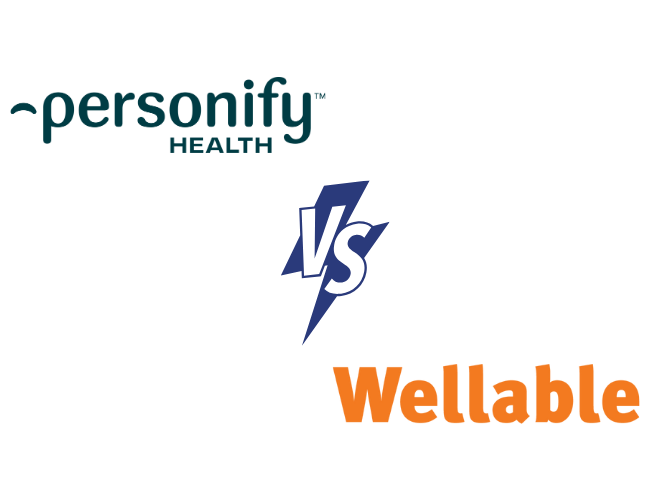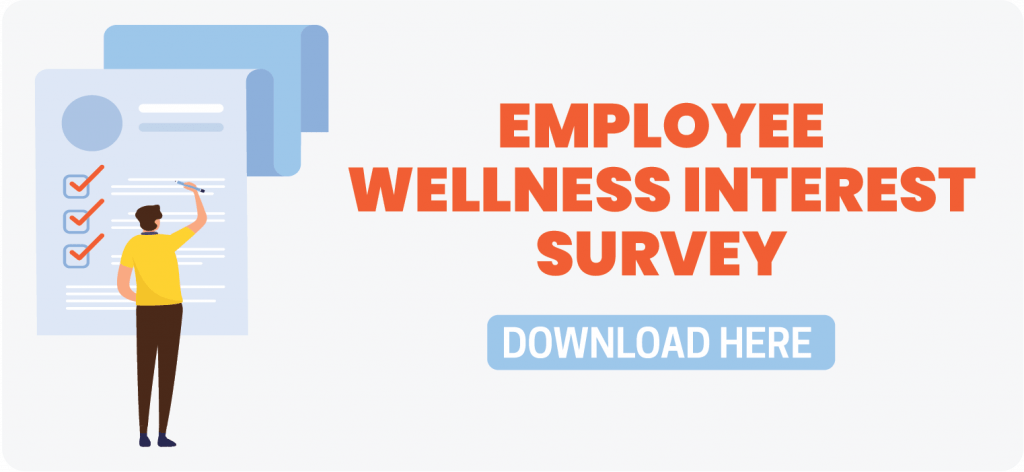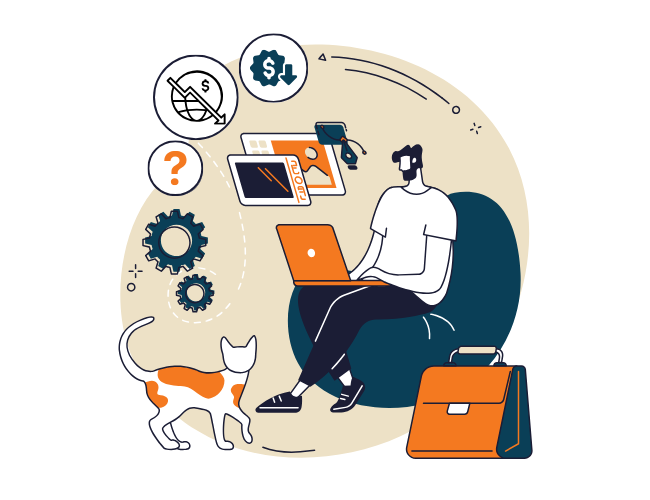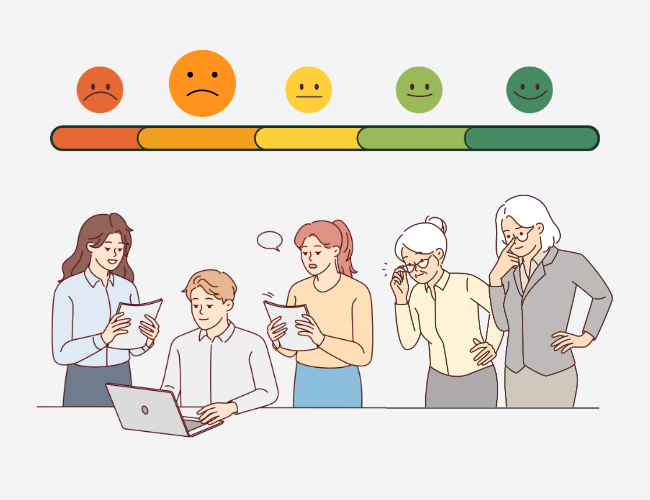Despite 90% of organizations with office space returning to the office in 2024, modern employees continue to value workplace flexibility and mental health support, recognizing the deep connection between the two. Organizations must adapt by implementing flexible working arrangements that balance performance with employee well-being. Adopting a personalized approach that aligns policies with the unique individual needs of employees contributes to increased employee health, happiness, performance, and productivity.
Explore six flexible arrangement trends for an optimal work environment in 2025.

Pressed for time? Here’s a quick summary…
- Hybrid models: Hybrid work arrangements have gained traction, balancing remote and in-office work. The freeform hybrid sets a specific number of required in-office days while allowing employees to choose which days they come in, while an anchor model designates the required in-office days or weeks.
- Schedule flexibility: Compressed work weeks, flextime, and reduced hours or part-time roles provide greater schedule flexibility. These approaches expand an organization’s talent pool and encourage work-life balance.
- Maximizing well-being: A holistic wellness program can boost employee satisfaction, retention, engagement, and overall health. Paid sabbatical leave further supports well-being, offering extended breaks for personal commitments and growth.
- Flex work benefits: For employees, flex work offers greater work-life balance and autonomy, reduces burnout, and enhances well-being. For employers, it reduces overhead costs and turnover, broadens their talent pool, and boosts productivity and satisfaction.
- Successful implementation: Transitioning to flex work requires clear policies that are tailored to individual and departmental needs, regular communication, monitoring of success metrics, and continuous efforts to maintain company culture.
Trend One: Implement A Hybrid Work Model
Heading into 2025, work arrangements have solidified into a predominantly hybrid routine, while fully remote work is on the decline. Hybrid models offer a balanced approach, empowering employees with more control over their schedules. This flexibility reduces work-life balance and reduces commuting, contributing to increased leisure and personal time.

For employers, hybrid models can be beneficial for employee retention and recruitment. Research shows that hybrid work helps address the top three factors contributing to turnover:
- Childcare (55%)
- Work-life balance (47%)
- Mental well-being concerns (47%)
By integrating hybrid work arrangements, organizations can remain competitive, providing autonomy and flexibility to attract and retain top talent. Hybrid models can be implemented in various ways, including:
Freeform Hybrid
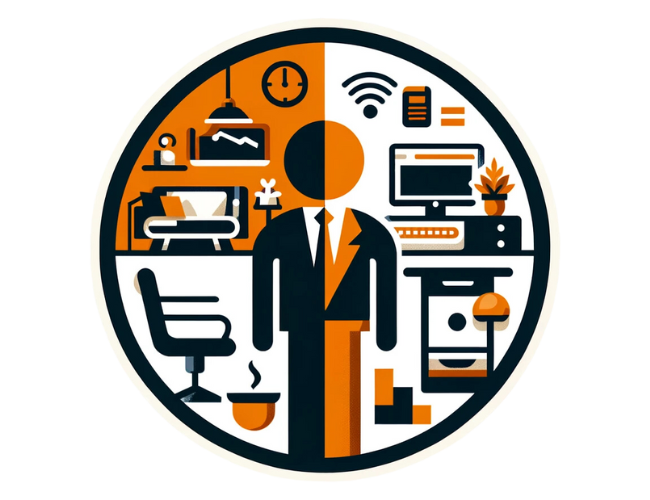
The freeform hybrid model has a set number of required days at the office while giving employees the autonomy to choose their in-office days.
- Pros: A freeform hybrid model caters to diverse employee needs and work styles, offering a highly adaptable work environment. It allows employees to plan their office days around critical meetings, collaborative projects, or personal preferences, improving satisfaction and productivity.
- Cons: The variability of employee presence in the office can lead to coordination challenges and potential gaps in communication.
Anchor Days/Weeks
The anchor days/weeks approach designates required in-office days or weeks with the flexibility of remote work for the remaining time.
- Pros: Anchor days promote unity and team bonding through regular in-person interactions, boosting collaboration and company culture.
- Cons: Roles that require deep, focused work may face challenges on in-office days. Long meetings, frequent chatter, and the buzz of office activity can hinder the productivity of employees who rely on uninterrupted time to complete their tasks.
Both models have their unique advantages and challenges. When implementing a hybrid work policy, it’s important to consider the nature of the work, employee preferences, and organizational goals to tailor the most effective and productive arrangement.
Trend Two: Consider A Compressed Work Week

Hustle culture convinced the masses that a work-centered life was the key to success, glorifying 70-hour workweeks and a constant grind mentality. However, research has debunked the theory that more hours equate to higher productivity, and it certainly doesn’t have a positive impact on health. Studies reveal that productivity decreases sharply after 50 hours per week and drops off entirely after 55 hours. Additionally, working an average of 55 hours or more each week increases an employee’s risk of stroke by 35% and the risk of heart disease by 40%.
As burnout rates rise, people have recognized the toxicity of hustle culture and questioned the long-standing tradition of the five-day workweek. A study conducted by time management expert Laura Vanderkam found that a 38-hour workweek is optimal for limiting time pressure while maintaining productivity. This is similar to the 30-35 hours that the happiest countries tend to work weekly.
A recent six-month pilot program, conducted in South Africa by 4 Day Week Global in partnership with Boston College and Stellenbosch Business School, aimed to reduce the traditional 40-hour workweek. It involved 28 companies and 470 employees, primarily from the professional services, IT, and marketing sectors.
The program’s results were overwhelmingly positive:
- 92% of participating companies plan to maintain the 4-day workweek, citing improvements in business productivity, performance, and talent attraction.
- There was an 11% average reduction in turnover and a 9% decrease in absenteeism, with revenue increasing by a weighted average of 10.5%.
- 90% of employees favored continuing with the 4-day week. Over half of the participants indicated they would need a 21-50% pay increase to consider returning to a 5-day schedule.
These findings further confirm that reduced workweeks can lead to better work-life balance, lower stress, and higher job satisfaction without compromising business performance. Organizations like Elnatan, an IT company in the pilot, reported that employees were more rested and productive, with no decline in customer service quality.
The study’s success underscores the feasibility of compressed workweeks, such as:
- 4 x 10-hour days (40 hours)
- 5 x 7.6 hour days (38 hours)
- 4 x 8-hour days (32 hours)
- 5 x 6-hour days (30 hours)
Employers can create the opportunity for condensed work by shaving off low-value tasks and unnecessary meetings. This gives employees extra time for personal matters, limits burnout, and encourages overall happiness.
Trend Three: Allow Flextime
Organizations can maximize performance by allowing individuals to match work with their circadian rhythms. Circadian rhythms refer to the body’s internal clock that controls energy regulation, determining how alert or sleepy one feels at a given point in time. This hardwired pattern can greatly affect employee productivity, yet many employers fail to regard its importance.
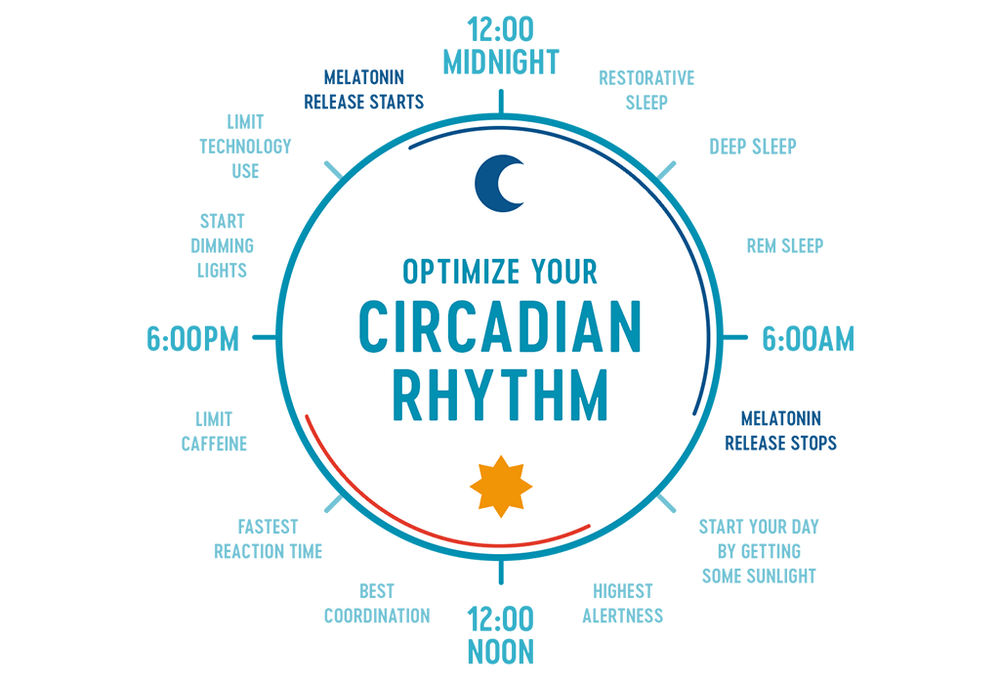
For example, employees’ peak levels of energy don’t occur until a few hours after the start of a typical workday (8 am), yet they often have morning meetings in which they are expected to be engaged and participative. Their mid-day energy peak (around 12 pm) might be spent on low-value tasks such as catching up on emails, leaving them to complete high-value tasks during their greatest energy dip (3 pm).
While the cycle outlined above is common, there are individual differences to circadian rhythms that can shift employees’ energy levels. “Larks”, or morning people, tend to spike in alertness earlier in the day, while “owls”, or night people, spike later in the day. More and more companies, like Microsoft, are allowing their employees to choose when to start their workday.
Organizations can move away from a one-size-fits-all approach by implementing flextime. Aligning work schedules with individuals’ energy levels can result in a more productive workforce and an improved employee experience.
Trend Four: Offer Reduced Hours Or Part-Time Work

Reduced hours or part-time work allows employees to work fewer hours than on a standard full-time schedule. This provides the necessary time for medical appointments, caregiving responsibilities, or effective energy level and well-being management, making it particularly appealing to:
- Caregivers
- Individuals with medical conditions
- Employees pursuing education or other professional development activities
- Those seeking greater work-life balance in general
Organizations may offer reduced hours or part-time work temporarily during specific life stages or challenges, or as a permanent employment option. Temporary arrangements can support employees through periods of change, such as new parenthood or recovery from illness, while permanent part-time roles cater to those who consistently need a reduced workload.
By offering part-time or reduced-hour roles, organizations create a more inclusive workplace and open their doors to a broader talent pool.
Job Sharing
Job sharing is when two part-time employees collectively fulfill the duties of one full-time position. They divide the role’s tasks, responsibilities, and working hours to ensure seamless execution of the job’s full scope.
Employees in this arrangement benefit from increased flexibility, while employers gain diverse perspectives, skills, and experiences. Job-sharing also provides a built-in backup system, as one employee can cover for the other during absences, ensuring a continuous workflow and reliability in job performance.
Trend Five: Provide Sabbaticals

Rather than resorting to quitting, retiring, or settling for a brief two-week vacation, sabbaticals provide an opportunity for employees to extend time off from work, returning refreshed and inspired. Sabbatical leaves range from several weeks to several years depending on the company’s policy and the employee’s tenure. The reasons for taking a sabbatical may vary, including:
- Exploring personal interests
- Pursuing professional development opportunities
- Spending extended time with family
- Traveling the world
- Volunteering
While not required, a sabbatical is traditionally paid time off, ensuring employees fully reap the benefits of improved well-being without the burden of financial stress. Implementing a paid sabbatical program can boost employee retention and job satisfaction while fueling creativity and innovation as employees return to work with renewed passion.
Trend Six: Prioritize Employee Wellness

Putting employee wellness first has become a core business strategy for leading organizations as job applicants continually seek companies that prioritize their well-being. In one survey, 88% of HR professionals believed they would reduce staff turnover if they offered more appealing wellness benefits, and 68% reported that applicants have turned down a job due to a lack of wellness benefits being offered.
Wellness benefits come in a variety of forms, from gym memberships to free or discounted healthcare services. A holistic employee wellness program is optimal for addressing all dimensions of employees’ well-being, resulting in improved job satisfaction and morale. Organizations that invest in their greatest asset – their workers – experience higher retention rates, increased engagement, and a happier and healthier workforce.
Wellness-focused companies also recognize the varied needs of their workforce, leading them to adopt flexible policies like remote work, flexible scheduling, and mental health support. Such measures enable employees to better manage work-life balance, health, and personal commitments. Integrating wellness benefits with flexible work options demonstrates a commitment to holistic employee well-being.
Benefits Of A Flex Work Arrangement
Flexible work arrangements not only enhance employees’ day-to-day work experience but also contribute to long-term job satisfaction and organizational success.

Benefits Of Workplace Flexibility For Employees
- Greater work-life balance: By allowing employees to tailor their work schedules and locations, they can maintain a healthier work-life balance. This flexibility lowers stress levels and boosts overall life satisfaction.
- Increases autonomy: Offering flex work empowers employees with greater autonomy, increasing job satisfaction and investment in their work.
- Improves financial wellness: Flexible work arrangements often reduce or eliminate commuting and limit the need for extensive childcare or caregiving services, easing financial burdens and saving time.
- Reduces burnout: The ability for employees to take necessary breaks, work at their most productive times, choose an environment that sparks creativity, and avoid long commutes can reduce exhaustion and burnout.
- Enhances well-being: Tailored work models allow employees to choose an arrangement that suits their individual needs, whether it’s working from a comfortable home office or adjusting their schedule to accommodate personal commitments or hobbies. This personalized approach improves overall well-being, allowing employees to care for their mental and physical health.
Benefits Of Workplace Flexibility For Employers

- Reduces overhead costs: Transitioning to flexible or remote work arrangements can result in significant savings for employers. Research indicates an average saving of $11,000 per employee when switching to remote work due to reductions in office space, utilities, and other overhead expenses.
- Broadens talent pool: Flex work can attract a broader range of applicants. This expanded talent pool introduces diverse skill sets and perspectives, enhancing the quality of the workforce.
- Improves retention: Flexible work arrangements are often more sustainable for employees than rigid policies, allowing them to maintain work-life balance in the long term. Employees are more likely to stay loyal to an organization that supports their personal needs, reducing turnover rates.
- Heightens productivity: When employees have the freedom to choose their optimal work times and environment, they are more efficient and motivated in their tasks. For example, employees who choose to work remotely are reported to be 15% more productive on average.
- Boosts employee satisfaction: A recent report reveals that 36.2 million Americans will be working remotely in 2025—a 90% increase from the pre-pandemic era. The report shows that increased schedule and location flexibility, commuting elimination, and a reduction in nonessential meetings result in lower employee stress, greater happiness, and heightened productivity. While fully remote work isn’t feasible for every organization, offering flexible work arrangements can lead to many of these benefits.
Case Study: Workplace Flexibility In A Fortune 500 Company
A study conducted by Phyllis Moen (University of Minnesota) and Erin L. Kelly (MIT Sloan School of Management) examined the effects of flexible work arrangements in a Fortune 500 company’s IT division, involving 700 employees.
The pilot group reported:
-
– Greater control over work schedules
– Increased supervisor support
– Improved work-family balance
– Higher job satisfaction
– Reduced burnout, stress, and psychological distress
This study challenges misconceptions about flexible work models harming career progression or productivity. It demonstrates that flexible work can lead to more productive, satisfied, and healthier employees, benefiting the organization’s overall performance. The research highlights the need for organizational strategies that increase flexibility and managerial support to effectively address work-life balance issues.
“Our research demonstrates that workers who are allowed to have a voice in the hours and location of their work not only feel better about their jobs, but also less conflicted about their work-to-family balance. Crucially, these workers are also more efficient and more productive on the job. In other words, workplace flexibility is beneficial—not detrimental—to organizations.” – Phyllis Moen, McKnight Presidential Chair in Sociology at the University of Minnesota
How To Make Flexible Work A Success
To successfully navigate the transition to flexible work models, organizations must take strategic steps that align with both employee needs and organizational goals.
1. Develop A Clear Policy
Crafting a comprehensive flexible work policy involves:

- Determining eligibility: Define which roles or departments are eligible for flex work. For example, employees whose roles are largely independent and do not require physical presence or direct access to on-site resources may be ideal candidates for freeform hybrid work or flextime. Alternatively, roles that require frequent collaboration, access to physical resources, or face-to-face interactions may be better suited for regular synchronized, in-office work.
- Outline available options: Be flexible about flexibility, recognizing that there’s no one-size-fits-all solution. Offer various options like remote or part-time work, flexible hours, or compressed schedules, depending on employees’ circumstances, role requirements, and business priorities.
- Set expectations: Establish clear guidelines for communication and performance. Focus on quality of work, rather than time or physical presence, as a measure of success. This mindset promotes productivity and work-life balance, aligning with the benefits of flexible work arrangements.
2. Secure Leadership Buy-In & Support for Flexible Work
Leadership endorsement is essential for the successful implementation of flex work. Gaining leaders’ support involves:
- Understand concerns: Acknowledge apprehensions leaders may have regarding flex work, such as potential impacts on productivity, communication, team cohesion, or performance evaluation. Addressing these concerns is the first step in gaining their trust and cooperation.
- Align with business objectives: Connect the advantages of flexible work with organizational goals, such as cost savings, access to a wider talent pool, and improved employee satisfaction.
- Highlighting risk mitigation: Position flexible work as a buffer against challenges associated with employee burnout, turnover, and talent scarcity.
- Show data-driven evidence: Present research demonstrating the benefits of flexible work. This could include case studies showing increased productivity, improved employee well-being, and higher retention rates.
- Pilot program as proof of concept: Propose a well-structured pilot program as a low-risk way to demonstrate the feasibility and benefits of flexible work. This controlled approach allows leaders to see firsthand how such arrangements can function effectively.
- Build a collaborative framework: Involve leaders in the planning and implementation process. Their input not only ensures that the policy is practical and aligned with business objectives but fosters a sense of ownership and commitment to the model.
3. Invest In The Right Tools

Effective flex work relies on technology, including:
- Collaboration platforms: Tools like Slack, Microsoft Teams, and Asana enable seamless communication and project management.
- Cloud storage: Services like Google Drive and Dropbox ensure document accessibility and version control.
- Video conferencing: Zoom, Skype, and Google Meet facilitate face-to-face interaction and team meetings.
4. Pilot & Expand Gradually
Run a pilot program in a select group or department, gather feedback, and refine the approach before rolling it out more broadly. Highlight pilot successes to build momentum and address leadership concerns.
5. Communicate

Clearly communicate expectations and provide training for efficient work in a flexible environment. Maintain open, two-way communication through regular check-ins and feedback loops to address concerns promptly and make necessary adjustments.
6. Measure & Adapt
Monitor key metrics like productivity, employee engagement, and retention to assess the program’s effectiveness. Use employee feedback for continuous improvements, tailoring the work model to suit organizational and employee needs.
7. Maintain Company Culture
Counter the misconception that a strong company culture relies solely on in-person interactions. Company culture can be cultivated or even improved within flexible work arrangements, supporting components of a positive and supportive workplace like well-being and work-life balance.
Strategies to build and maintain a strong company culture include:
- Annual company retreat: Host an annual, in-person company retreat to strengthen bonds and reinforce company values.
- Virtual team-building events: Organize regular virtual events, like online games or team challenges, to foster camaraderie, collaboration, and connection.
- Recognition programs: Implement recognition programs that celebrate employee achievements and milestones, boosting morale and creating a positive work culture. This could be ‘Employee of the Month’ awards, shout-outs during meetings, or highlighting work anniversaries and personal achievements.
- Virtual lunch hours: Schedule virtual lunch hours where employees can join a video call to chat informally, mimicking in-office interactions and maintaining social connections.
- Surveys & feedback mechanisms: Regularly conduct culture surveys and provide forums for feedback to align company culture with employees’ needs and expectations.
This article was last updated on January 16, 2025


